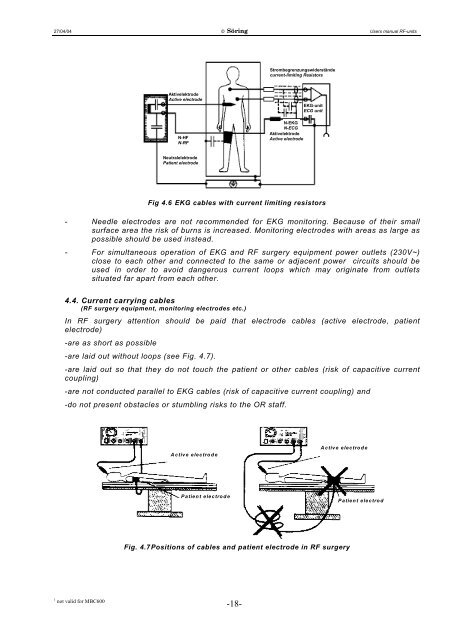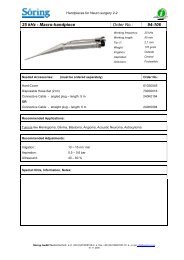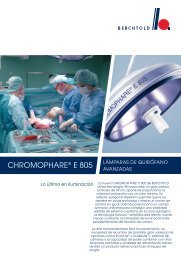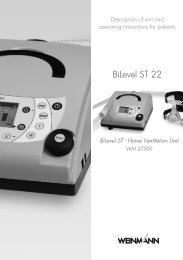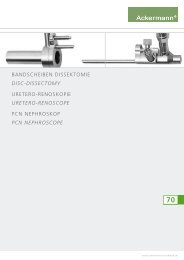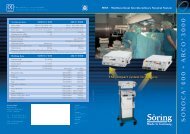USERS MANUAL
USERS MANUAL
USERS MANUAL
Create successful ePaper yourself
Turn your PDF publications into a flip-book with our unique Google optimized e-Paper software.
27/04/04 © Söring Users manual RF-units<br />
Strombegrenzungswiderstände<br />
current-limiting Resistors<br />
Aktivelektrode<br />
Active electrode<br />
N-HF<br />
N-RF<br />
N-EKG<br />
N-ECG<br />
Aktivelektrode<br />
Active electrode<br />
EKG-unit<br />
ECG unit<br />
Neutralelektrode<br />
Patient electrode<br />
Fig 4.6 EKG cables with current limiting resistors<br />
- Needle electrodes are not recommended for EKG monitoring. Because of their small<br />
surface area the risk of burns is increased. Monitoring electrodes with areas as large as<br />
possible should be used instead.<br />
- For simultaneous operation of EKG and RF surgery equipment power outlets (230V~)<br />
close to each other and connected to the same or adjacent power circuits should be<br />
used in order to avoid dangerous current loops which may originate from outlets<br />
situated far apart from each other.<br />
4.4. Current carrying cables<br />
(RF surgery equipment, monitoring electrodes etc.)<br />
In RF surgery attention should be paid that electrode cables (active electrode, patient<br />
electrode)<br />
-are as short as possible<br />
-are laid out without loops (see Fig. 4.7).<br />
-are laid out so that they do not touch the patient or other cables (risk of capacitive current<br />
coupling)<br />
-are not conducted parallel to EKG cables (risk of capacitive current coupling) and<br />
-do not present obstacles or stumbling risks to the OR staff.<br />
Active electrode<br />
Active electrode<br />
Patient electrode<br />
Patient electrod<br />
Fig. 4.7 Positions of cables and patient electrode in RF surgery<br />
1 not valid for MBC600<br />
-18-


